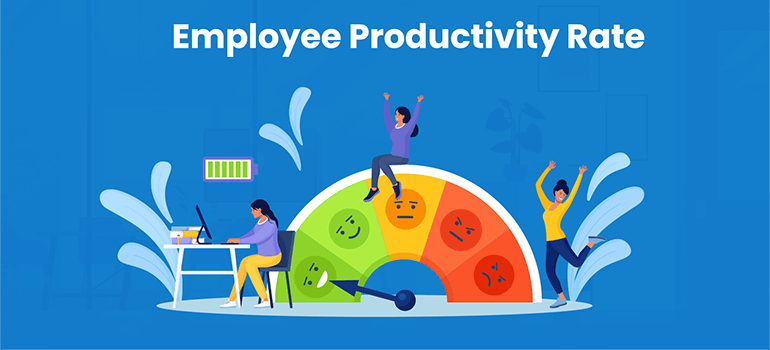Navigating Paid Time Off (PTO) policies and Alaska Leave Laws is important for both employers and employees. Unlike many states with strict rules, Alaska Leave Laws allows employers a lot of freedom in how they manage vacation, sick leave, and other types of time off. This article covers Alaska’s PTO rules, including how much leave employees can take, how it can be saved up, and what happens to unused leave. We also explain federal and state laws about maternity, paternity, and family medical leave, as well as policies for bereavement, jury duty, military leave, and voting leave. By understanding these policies and using tools like the Day Off app, employers can create fair leave policies, and employees can better know their rights and benefits.
Paid Time Off (PTO) in Alaska
Leave Quota
In Alaska, vacation benefits are not a legal requirement. Employers are not obligated to offer vacation leave, whether paid or unpaid. If an employer opts to provide such leave, it must align with the company’s policy or employment contract. Additionally, any vacation benefits must comply with employment laws and be detailed in collective bargaining agreements.
Accrual
Employers in Alaska are not legally required to pay out accrued vacation. There is no federal or state mandate in Alaska that necessitates employers to compensate employees for their accrued vacation or other PTO upon termination. Employers can also establish policies that limit the amount of vacation leave employees can accumulate over time.
Roll Over
The “Use-It-or-Lose-It” policy is allowed in Alaska. Since state law does not regulate this, employers can require employees to use their leave by a certain date or forfeit it.
Payout
There are no specific laws in Alaska addressing the payment of accrued, unused vacation pay. This issue is typically resolved through agreements between employers and employees.
Payment of Accrued, Unused Vacation on Termination
Alaska state law does not explicitly require payment for accrued, unused vacation upon employment termination. Employers can set their own policies regarding the forfeiture of accrued leave. If a contract or policy stipulates compensation for unused vacation, employers must adhere to it.
Sick Leave in Alaska
No State Law Guarantees Sick Leave
Alaska does not mandate sick leave benefits. Employers are not required to provide paid or unpaid sick leave unless they choose to do so, in which case they must follow their established policies or employment contracts.
Family and Medical Leave Public Employers
Alaska’s Family Leave Act (AFLA) mandates that covered public employers provide eligible employees with up to 18 weeks of job-protected leave, paid or unpaid, within a 12 or 24-month period for qualifying family and medical reasons.
Federal Laws in Alaska Leave Quota
Under the federal Family and Medical Leave Act (FMLA), employers in Alaska must provide eligible employees with 12 weeks of unpaid leave. Eligibility requires the employee to have worked for at least 12 months, accumulating at least 1,250 hours, and the company must employ at least 50 employees within a 75-mile radius.
Maternity, Paternity, and FMLA in Alaska
Private Sector Employees
New parents are entitled to 12 weeks of unpaid, job-protected leave under the FMLA. The Pregnancy Discrimination Act (PDA) further protects against employment discrimination based on pregnancy. Employers with 15 or more employees must comply with this act.
Additional State Laws
The Alaska Human Rights Law protects against employment discrimination based on sex, pregnancy, childbirth, and related conditions. It applies to all employers, regardless of size, in both the private and public sectors.
Public Sector Employees
The AFLA provides up to 18 weeks of job-protected leave for pregnancy, childbirth, or adoption for public employees. Employees must meet specific employment criteria to qualify. Employers must also offer up to four months of leave for pregnancy-related disabilities.
Bereavement Leave in Alaska
No Mandate for Bereavement Leave
There are no federal or state requirements for bereavement leave. Employers may choose to provide it and must adhere to their policies if they do.
Jury Duty in Alaska
Unpaid Leave for Jury Duty
Employers must provide unpaid leave for jury duty and cannot fire or penalize employees for serving. Public employers must provide paid leave for full-time employees called to jury service.
Military Leave in Alaska
Unlimited Unpaid Leave
Under Alaska law and USERRA, employees called to military service are entitled to unlimited unpaid leave and job reinstatement rights. Public employees summoned by the governor are entitled to five days of paid leave.
Voting Leave in Alaska
Paid Time Off for Voting
Employers must provide paid time off for employees to vote if their schedules do not allow sufficient time outside working hours. The statute does not specify the duration of this leave.
Alaska State Holidays in 2024
No Requirement for Holiday Leave
Private employers in Alaska are not required to provide paid or unpaid holiday leave. They can mandate work on holidays and are not obligated to pay a premium rate unless it qualifies as overtime under the law. Employers must follow their policies if they choose to offer holiday leave. Alaska officially recognizes 11 state holidays.










